A Complete Unknown Review: The Bob Dylan Mystery Lives on the Big Screen
A Complete Unknown is a biopic on the life of the American songwriter Bob Dylan, played by Timothée Chalamet, directed by the Oscar candidate James Mangold (Girls interrupted). Mangold also edited the script, flanked by Jay Cocks. The music team is led by the music executive producer and Grammy award Nick Baxter and by the music supervisor, who in turn won a Grammy, Steven Gizicki. In the film, Bob Dylan’s original songs were also sung by Chalamet himself. That Bob Dylan is an artist and an almost unknowable person postulates yet another biographical film that tries to tell it, right from its title. On the other hand, what makes it fascinating is precisely the immediate recognition of its profile, its hair, its vocal timbre, and its sliding ideas into songs; all as opposed to the tenth anniversary, proud resistance with which he struggles against anything that tries to reduce it to a definition, a label. Even this same film, which followed with the least possible involvement, from the most distant position that was possible to take, refusing to meet the protagonist Timothée Chalamet and to see the finished product.
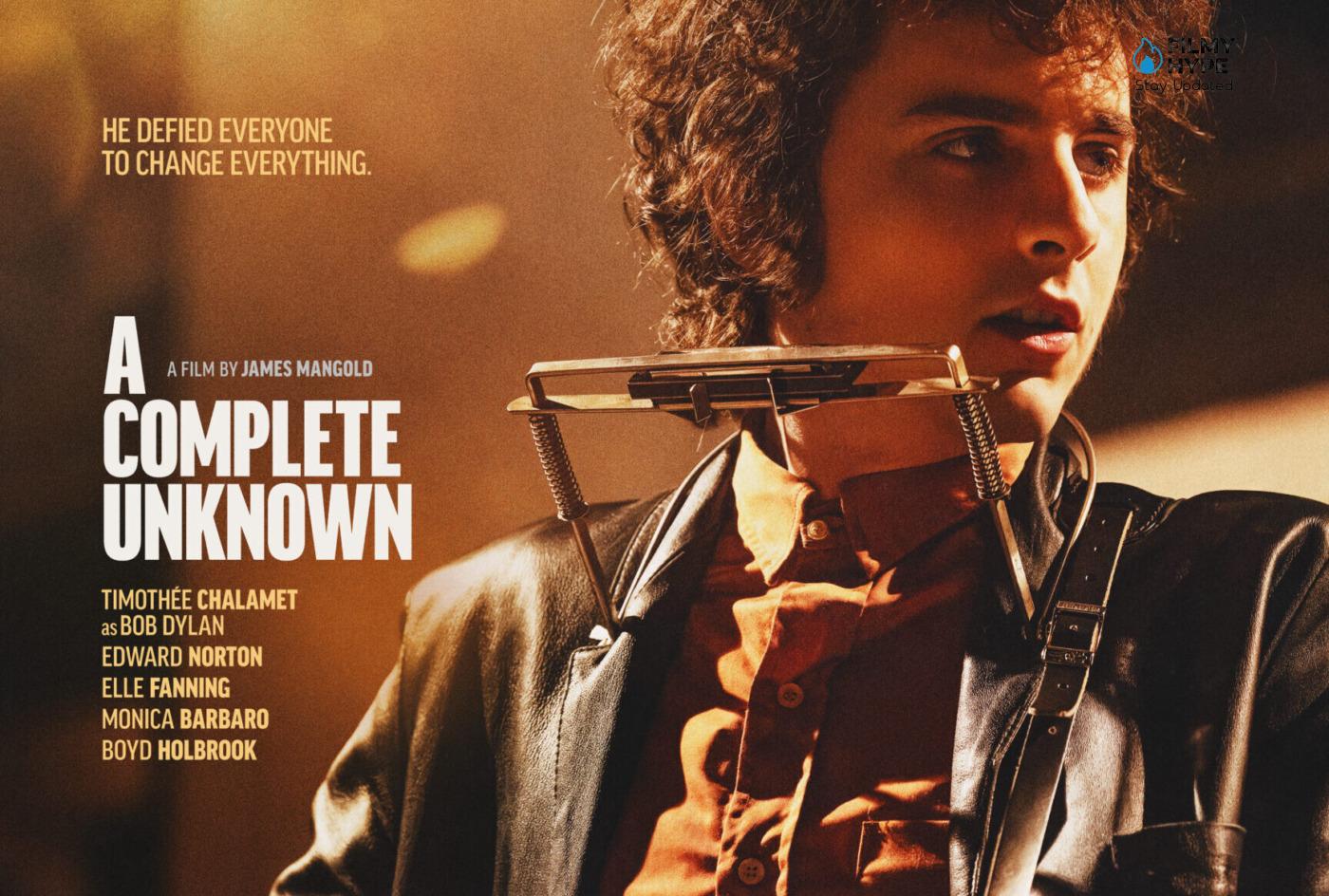
All things considered, Dune’s interpreter and Call Me By Your Name he did pretty well in giving him body and voice, whereas it was measured not only with the real Dylan but also with the six amazing colleagues of Todd Haynes’s I’m Not There (2007): Christian Bale, Cate Blanchett, Marcus Carl Franklin, Richard Gere, Heath Ledger and Ben Whishaw. On the one hand, not having the breath of those you are going to represent on the neck is a significant advantage, as is the period of the pandemic that lengthens the time of study and preparation. On the other Timothée Chalamet – who produces here as well as acting – has made the most of that kind of conventional role that an actor who wants to take himself seriously sooner or later adds to his resume. That of an icon so recognizable that even the most distracted spectator can evaluate for himself your ability to make it relive on the screen. Some need to launch a career, others to give a point of reference in their evolution: discrimination is always the degree of accuracy with which the real person is portrayed.
A Complete Unknown Review: The Story Plot
It is 1961 and a boy arrives in New York with his guitar and with the hope of meeting his idol, Woody Guthrie, the famous folk singer. He finds him seriously ill in the hospital. At his bedside, there is also another well-known folk hero, Pete Seeger. The boy takes up the guitar and sings to Guthrie the song he composed in his honor, “Song to Woody”, electrocuting both his idol and Seeger, who immediately takes him under his wing and introduces him to the tour of the Village, clubs, and festivals. The rise of the young Bobbie is fast, also because he writes uncommonly and crosses all the Gotha of his environment on his way, starting with the magnetic and already established Joan Baez with which he weaves a profitable sentimental and artistic partnership, while he churns out his best-known masterpieces and is overwhelmed by fame. The film covers the period of Dylan’s life from 1961 to the fateful 1964, the year in which he leaves for London and returns with a heart and ears full of the sounds of the groups that in America will be defined as British Invasion, Beatles in the lead but also many others, including the Kinks, explicitly mentioned in the film.
The change of stylistic course, however, does not go down to the record companies that have well-defined the characteristics of the “product” Dylan, and even less to the folk environment that sees with suspicion not to say with disgust, a guitar attached to the socket current. Dylan goes his own way, faces the crowd “betrayed” on the stage of the Festival, and in the end, as you know, he is right because the electric Like a Rolling Stone is still one of his most successful songs today, more loved, more sung and more covered than his endless repertoire. We are at the beginning of the years ’60, a decade of great ferment for the United States of America, between the post-World War II industrial revolution at full speed and the first, timid hints of turmoil of the youth generation of the time. A riot that becomes social and that penetrates even the most unsuspected ravines of the American culture of the time, such as music, especially folk music, which he saw in figures such as Woody Guthrie (Scoot McNairy) and Pete Seeger (Edward Norton) his most illustrious exponents.
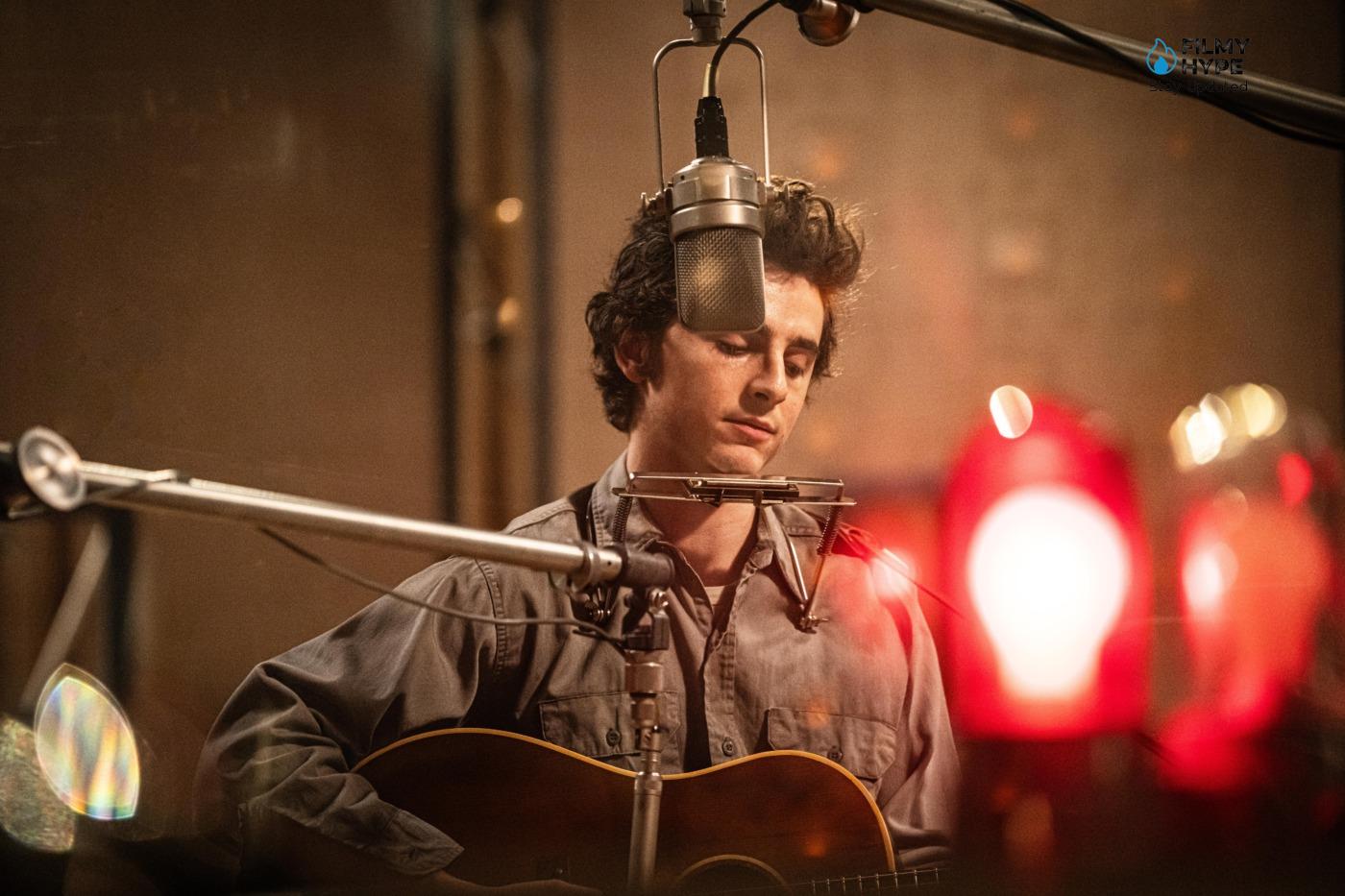
From Minnesota, the young and mysterious Bob Dylan (Timothée Chalamet) arrives in New York, who with his revolutionary and counter-current texts and music never heard before will change that world forever and beyond. Even took the risk of turning against the “strong powers” not only of the administrative establishment but also of the musical industry of the time, which certainly did not welcome his experiments and his artistic transformism. Far from pretending to tell life, death, and miracles of the Nobel Prize winner and Oscar of American music, At Complete Unknown, you take the risk of consciously wanting to concentrate on a specific decade in the life and career of the parolee and acclaimed musician, when penniless but with great passion and vehemence he arrived in New York City to meet his idol Guthrie and make his way into the world of socially engaged folk music. The film arriving in our theaters on Thursday 23 January is based on a script edited by the director James Mangold and Jay Cocks, who together adapt the biographical book Dylan Goes Electric! by Elijah Wald, published in 2015.
A Complete Unknown Review and Analysis
A biopic with a classic system but capable of involving the viewer from the first to the last minute and in which Timothee Chalamet falls perfectly into the clothes and torments of the young Bob Dylan, restoring his intuitions, his shaded areas, the many intolerances and obsession with music. A linear story that tells of a boy struck by a passion for music and writing who, once he has reached success, decides to challenge conventions and shuffle the cards by running after his genius, inevitably misunderstood, by those used to others. A Complete Unknown, which is a verse of the song of the “outrageous” for fans of folk, Dylan’s electric turn, “Like a Rolling Stone”, in the director’s intentions it refers in part to the enigmatic of a character who has always kept hiding the true essence of the person Robert Zimmerman. Bob Dylan in a sense is in part an alter ego with an adventurous life built, especially at the beginning, to the sound of sensational bales, like the revealing one of a great fantasy, which sees him spend his adolescence working in a circus.
A rather widespread custom in the world of entertainment and music of those years and precedents, so much so that many biographies of what we now consider great stars mix abundant doses of fantasy with reality. But Mangold’s story focuses not only on Dylan who does not reveal himself even in the domestic intimacy built with his partner and muse Silvye, but on his art. The film is a musical film, dotted with a large number of Dylan’s best-known pieces, suitably translated into Italian since we speak not only of a songwriter but also of a future Nobel Prize winner for Literature. The biggest mystery, in this story of Dylan’s life, is precisely that of the obsession that occurs in those who decide to follow their talent, their genius, their daemon. Already the ancients supported him: we all have one, but few people decide to embrace it, feed it, and follow it because once this decision is made, life changes in the direction of total fullness, which always costs a lot. Young Dylan recognizes his talent, embraces him, and makes him obsessed and his prison.
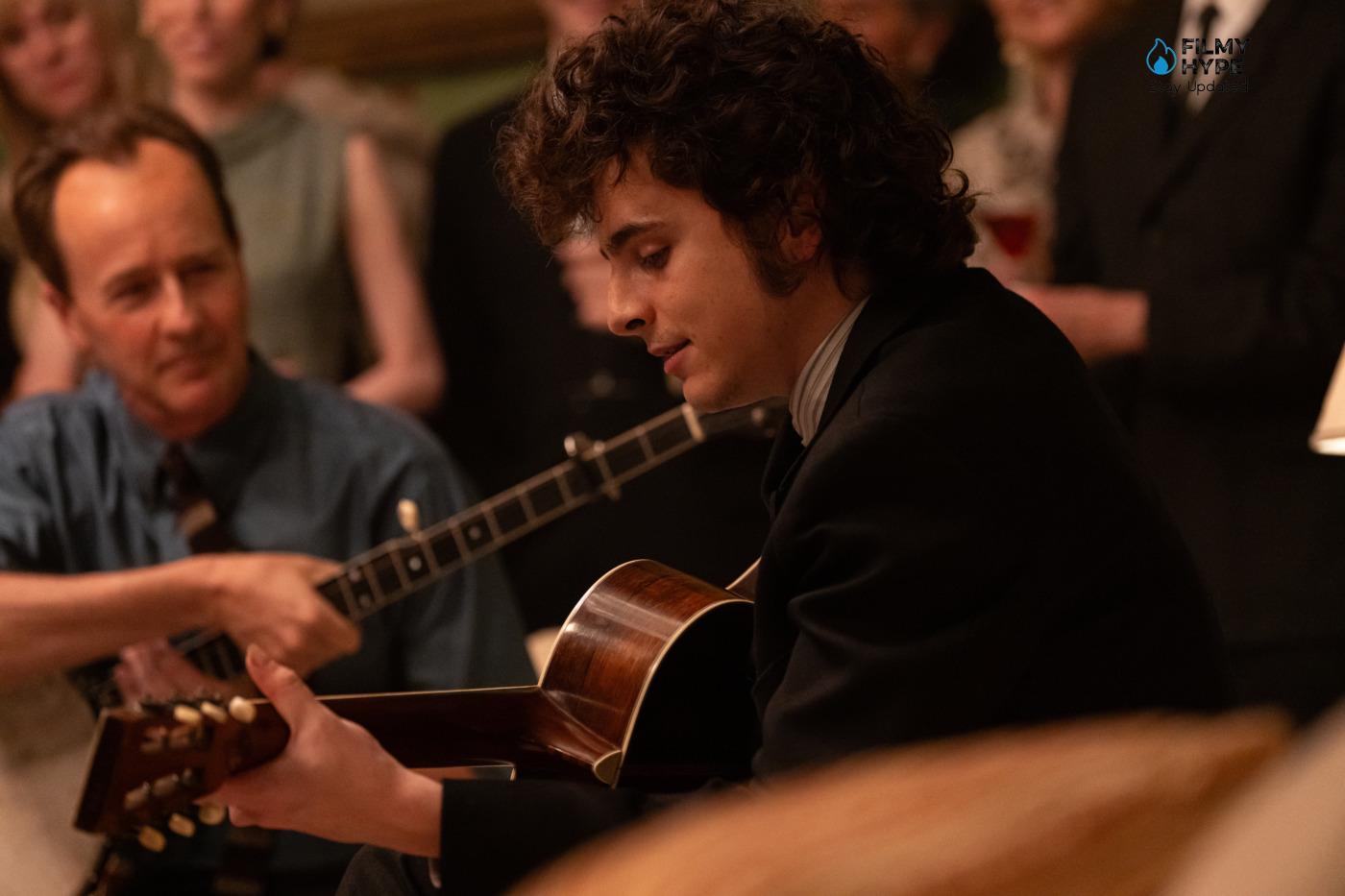
And when his talent requires him to go in an obstinate and opposite direction, he does it, because he has to. Not surprisingly, in the environment that openly challenges, those who understand and indeed support his risky turn are another unfortunate artist chained to his talent, Johnny Cash. And also, in the end, Joan Baez friend, colleague, lover, and rival but still she too lit the same fire. In Complete Unknown is the story of a young man who follows his genius and also what is urgent for his time and, in doing so, faces criticism, insults, and cuttings from the same people who applaud the first time he listens to “The Times They Are A-Changing”. People who hope that times will change, but only if they change according to their rules, in the direction they intend. The young Dylan instead chooses it alone and, as Johnny Cash tells him at some point “makes a mess”, taking risks and taking the road that precedes the times and illuminating it for all the others, as is the duty of every inspired artist, young or old who he is. And it is also in this message that the heart of this beautiful film beats.
But Chalamet is not the only acting noteworthy of being remembered in James Mangold’s film; all the performers in front of the camera lend their true voices to adapt to the musical characters that populate the lively A Complete Unknown: from Edward Norton’s Pete Seeger to the surprising and intense Joan Baez played by Monica Barbaro, up to an unpublished Boyd Holbrook in the role of the legend Johnny Cash, who a little ’ closes Mangold’s artistic circle that in 2005 had brought on the big screen the life and (in) Cash’s successes together with two perfect Joaquinspo and Reese Wither Precious stones that contribute to making A Complete Unknown a very solid biopic yet not unforgettable or revolutionary. Where instead of the multi-candidate film to the Golden Globes and the BAFTA (but we bet that at the Oscars 2025, it will go just as big) it hits the mark when it becomes an unprecedented cinematographic story of the folk musical environment of the years ’60, of the rigid traditionalism of that particular cultural enclave of the time, and how Bob Dylan managed not only to disturb the strong powers of his contemporary American government system but at the same time those of the short-sighted folk music industry of which he had legitimately fed and fed at the beginning.
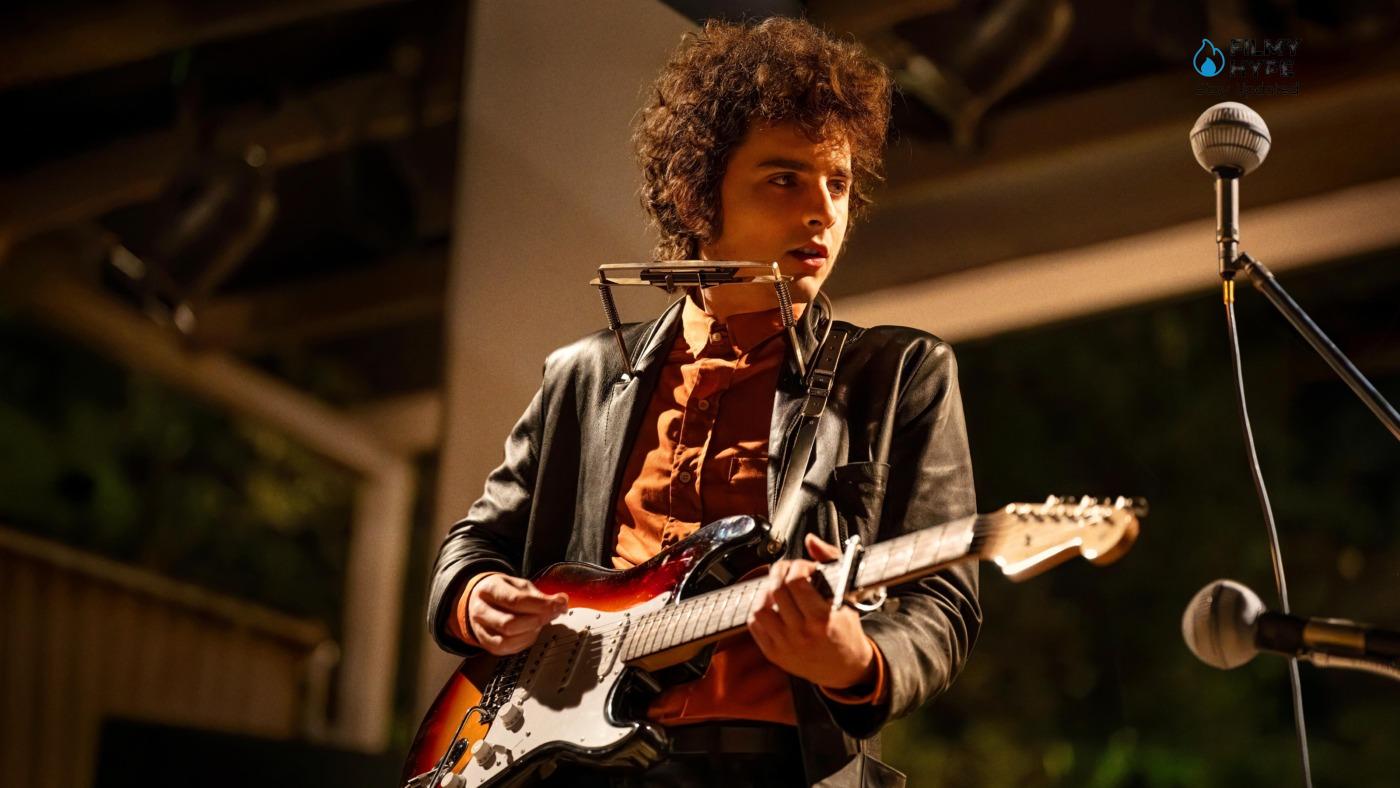
Searchlight Pictures)
Mangold’s film gives us back a sibylline and unpredictable Dylan, who will culminate his path in progressive ascent in 1965 on the occasion of the historic Newport Folk Festival, where the artist decides to present himself for the first time on that stage with an entire orchestra and an electric guitar; musical instrument not only “banned ” from that musical circle up to that moment, but which in some way represented a feared betrayal to the rigid system of values that folk music prefigured during that decade of granite importance. For all the reasons and reasons mentioned above, we believe that A Complete Unknown is indeed a very solid biographical feature film full of food for thought, but all in all, it represents yet another example of the deeply clever biopic, which chooses not to want to tell aspects of its protagonist and nor to want to provide explicit reading keys despite the packaging “suitable for any type of audience”, thus risking not to take any artistic risk calculatedly.
A completely antithesis programmatic nature with that I am not here by Todd Haynes who in 2007 dared to bring life, moments, and founding songs of the Bob Dylan myth to the big screen through always different actors and suggestive narrative chapters, cryptic and full of allegorical readings (in the cast there were unsurpassed Cate Blanchett, Heath Ledger and Christian Bale, among others). Ultimately, the new musical biopic directed by James Mangold is a solid and very classic example of a biographical story through images, music, and emotions. Distant yet akin to the previous Walk The Line – When love always burns Mangold’s soul, At Complete Unknown he tries to narrate Bob Dylan’s ineffability with rigor and respect but, in essence, with very little artistic courage. But he finds elements of great value on his way, such as an excellent cast led by an increasingly superstar Chalamet.
The nerve center of all this is the Newport Folk Festival, enclosed in a precise moment in the life of the protagonist: the segment that goes from its beginnings, in 1961, until 1965, the year in which the singer-songwriter performed in the concert that sanctioned the real turning point in his artistic career, that transition from folk to rock which was traumatic and disturbing for the masses (on the other hand, the film is inspired by a book, Dylan Goes Electric!, written by Elijah Wald). This is where the main strength, but also a weakness, of a romantic and mysterious film, which tries to capture the elusive and enigmatic essence of Dylan man, musician, and poet: to limit the complex psychology of the author to a precise moment of his life, actually providing few coordinates to frame him. Why In Complete Unknown he wants to bring Bob Dylan’s biggest mystery to the big screen: the same mind and its feelings. In this, the film manages to perfectly grasp the spirit and poetics of its main subject, but at the same time composes a work that is too fragmentary and, in some situations, hasty and superficial.
Why In Complete Unknown wants to be a political film about a “struggle on the system” that appears most current, yesterday as today, but does not devote the right space – in terms of minute and reflection – to the theme, remaining comfortably neutral and far from certain cardinal principles. It tries to be a musical summa of a precise phase in Dylan’s life but explores its artistic growth and success by jumping too abruptly from one story to another. In short, it is a biopic that wants to tell too much, cutting too much, without following a precise common thread accordingly, and at the end of the game packaging a series of precise snapshots on a fragment of Dylan’s life, making them confused and disconnected from each other. Mangold’s remains a fascinating and romantic film, but somehow incomplete, which perhaps wanted to intentionally reflect the anarchist and imperfect character of its protagonist. An operation that, on a formal level, is confirmed as “a Mangold film”, with a representation of 1960s America at times glossy and warm, characterized by those warm colors with an exquisite Western flavor. A frame in which music is the central element of narrative development, in a film that “interprets” Dylan’s sounds and words through the convincing performance of a Chalamet intense representing a mysterious artist, alienated and nonconformist.
A Complete Unknown Review: The Last Words
A Complete Unknown is a film that reflects the title very well: an atypical and imperfect biopic on the mystery of Bob Dylan, or the mind of one of the most influential artists of the last century. A personal, artistic, and musical enigma, framed in a limited story of his life, which for this reason is not enough to summarize the essence of the songwriter. It remains a very romantic operation, with a cast to scream and with high-level performances – above all that of Chalamet-Dylan – but also a frayed feature film, without a precise common thread, and for this reason beautiful to look at but difficult to understand. As was, on the other hand, Dylan himself in the strange one in 1965, when he decided to take on an electric guitar and change the music scene, again, forever.
Cast: Timothèe Chalamet, Edward Norton, Monica Barbaro, Elle Fanning, Boyd Holbrook
Director: James Mangold
Filmyhype.com Ratings: 4/5 (four stars)

A Complete Unknown Review: The Bob Dylan Mystery Lives on the Big Screen | Filmyhype
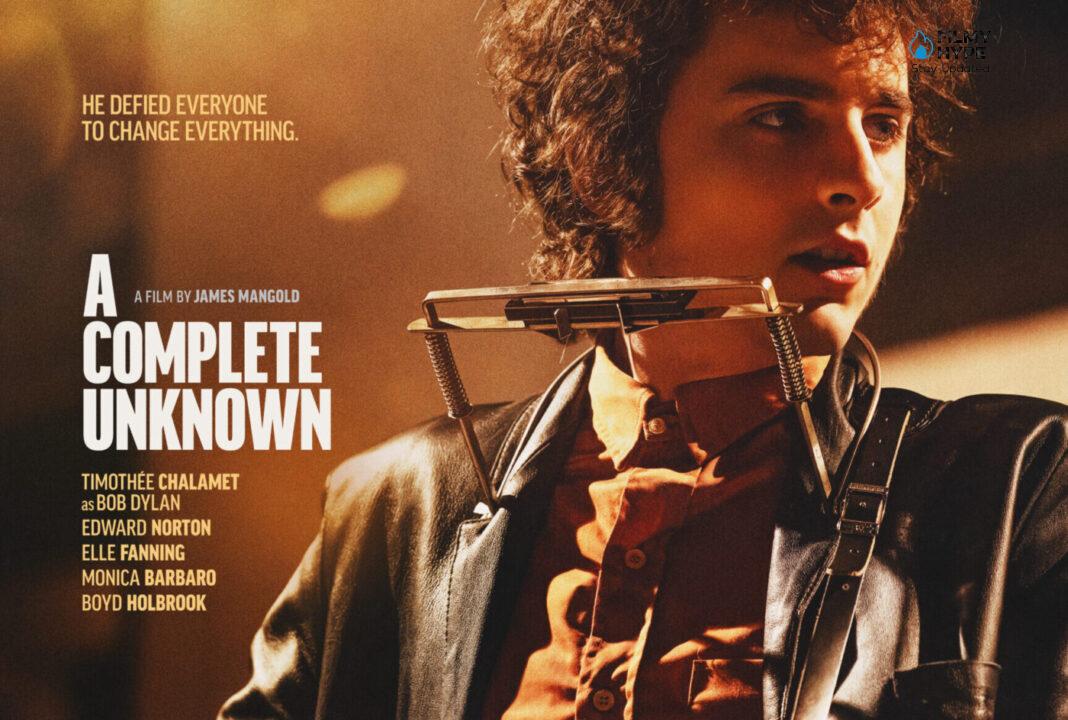
Director: James Mangold
Date Created: 2025-01-25 17:54
4
Pros
- Timothée Chalamet as Dylan is very convincing
- The whole cast shines, in particular, Edward Norton and Monica Barbaro
- The vintage reconstruction that immerses the viewer in the folk music of the time
- Interpretations
- Structure of the film
- Representation of Bob Dylan
Cons
- Not a canonical musical, but a film perhaps too sung
- The script for the film does not solve the Dylan riddle
- The comparison with the bold I am not here makes Mangold pale





